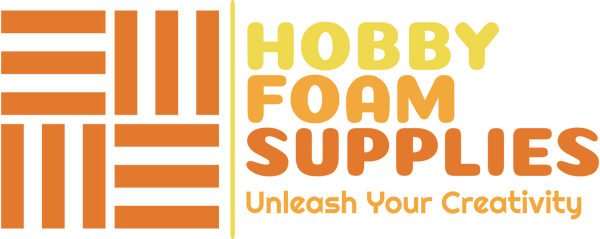Different hobbies affect various parts of the brain in unique ways, promoting mental stimulation, creativity, and overall cognitive health. Here's how some common hobbies engage different areas of the brain:
1. Gardening
-
Brain Area Affected: Prefrontal Cortex, Hippocampus
-
How It Works: Gardening encourages physical activity and problem-solving, which activates the prefrontal cortex (responsible for decision-making, planning, and focus). The act of nurturing plants and being outdoors can also reduce stress and boost mood, engaging the hippocampus (associated with memory and emotional regulation).
2. Crafting (Including XPS Foam Crafting)
-
Brain Area Affected: Parietal Lobe, Temporal Lobe, Occipital Lobe
-
How It Works: Crafting requires fine motor skills, creativity, and visual-spatial processing. The parietal lobe helps with hand-eye coordination and spatial awareness when cutting, shaping, or assembling items. The temporal lobe engages creativity and memory, especially when learning new techniques or recalling patterns. The occipital lobe is activated when visualizing designs or evaluating finished works.
3. Reading & Writing
-
Brain Area Affected: Broca's Area, Wernicke's Area, Occipital Lobe
-
How It Works: Reading stimulates both the visual cortex (occipital lobe) and language areas (Broca's area and Wernicke's area) involved in comprehension and production of speech. Writing, especially creative writing, enhances memory, and analytical thinking and encourages linguistic skills.
4. Walking & Light Exercise
-
Brain Area Affected: Cerebellum, Hippocampus, Prefrontal Cortex
-
How It Works: Walking or light exercise boosts blood circulation and enhances cognitive function, engaging the cerebellum (which controls movement and coordination). It also stimulates the hippocampus, improving memory and spatial awareness, and helps increase the size of the prefrontal cortex, leading to better decision-making and executive function.
5. Music & Playing Instruments
-
Brain Area Affected: Motor Cortex, Auditory Cortex, Cerebellum
-
How It Works: Playing an instrument or listening to music activates multiple brain regions. The motor cortex is responsible for controlling hand movements, while the auditory cortex processes sounds and music patterns. The cerebellum coordinates fine motor skills, and the prefrontal cortex enhances concentration and emotional regulation.
6. Socializing & Volunteering
-
Brain Area Affected: Prefrontal Cortex, Amygdala, Temporal Lobes
-
How It Works: Engaging in social activities or volunteering stimulates the prefrontal cortex (involved in complex thought and decision-making). Positive social interactions activate the amygdala (responsible for emotional regulation and processing emotions). These activities can also trigger the temporal lobes, which process emotions and memories tied to social experiences.
7. Puzzles & Problem-Solving Activities
-
Brain Area Affected: Frontal Lobe, Parietal Lobe
-
How It Works: Solving puzzles (like crosswords or Sudoku) or engaging in problem-solving activities activates the frontal lobe (responsible for reasoning, logic, and planning) and the parietal lobe (involved in spatial processing and mathematical reasoning).
8. Photography
-
Brain Area Affected: Occipital Lobe, Temporal Lobe, Parietal Lobe
-
How It Works: Photography stimulates the occipital lobe (visual processing) and the temporal lobe (memory and recognition of patterns). It encourages creativity, as the brain has to interpret lighting, composition, and framing, involving both the temporal and parietal lobes for spatial and memory tasks.
9. Cooking & Baking
-
Brain Area Affected: Frontal Lobe, Occipital Lobe, Parietal Lobe
-
How It Works: Cooking and baking activate the frontal lobe (for planning, organizing, and decision-making). The occipital lobe helps with visual-spatial tasks (like measuring and presentation), while the parietal lobe is involved in motor control, sensory integration, and handling tools.
10. Mindfulness & Meditation
-
Brain Area Affected: Prefrontal Cortex, Amygdala, Parietal Lobe
-
How It Works: Mindfulness and meditation enhance the prefrontal cortex (involved in attention, focus, and self-control) and decrease activity in the amygdala (associated with stress and emotional regulation). These practices help improve emotional well-being, increase focus, and reduce anxiety by fostering a balanced response to stress.
Conclusion
Engaging in different hobbies is like giving your brain a full workout. Some activities, like gardening and walking, improve physical and mental health, while others, such as crafting or reading, stimulate creativity, memory, and problem-solving skills. Incorporating a variety of hobbies into your routine can ensure that your brain stays active, agile, and healthy throughout life.

